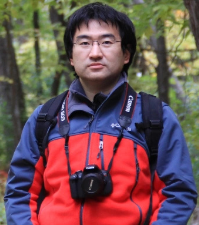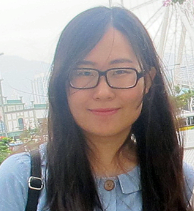
Prof. Dingde Jiang
Title: Network Slicing Application for Intent-Based Networking
Bio:
Dingde Jiang (S'08-M'09) received the Ph.D. degree in communication and information systems from the University of Electronic Science and Technology of China, Chengdu, China, in 2009. From 2013 to 2014, he was a Visiting Scholar with the Department of Computer Science and Engineering, University of Minnesota, Minneapolis, MN, USA. He was a Professor with the School of Computer Science and Engineering and the College of Information Science and Engineering at Northeastern University, Shenyang, China, before April of 2017. He is currently a Professor with the School of Astronautics and Aeronautic, University of Electronic Science and Technology of China. His research focuses on network measurement, modeling and optimization, performance analysis, network management, network security in communication networks, particularly in software-defined networks, information-centric networking, energy-efficient networks, and cognitive networks. His research is supported by the National Science Foundation of China, the Program for New Century Excellent Talents with the University of Ministry of Education of China, and so on. Dr. Jiang served as a technical program committee member for several international conferences. He has received the best paper awards at several international conferences. He has been serving as an editor for one international journal.
Abstract:
With all kinds of new network technologies and paradigms such as 5G/6G networks, satellite communications, and Industrial Internet, appearing quickly, it is an important challenge how to effectively and efficiently deploy and utilize network resources. Highly efficient network deployments and applications have received extensive attentions for next networking paradigm. As one of the most important solutions, network slicing and intend-based networking are significantly attractive in academic and industrial communities. This will bring forth the innovational experience for network researchers and operators. However, these new technologies and solutions face many challenges in practical applications and deployments. Specially for network slicing in intent-based networking, we should in detail consider new networking pattern, technology, and solution. In addition, We also take in account all kinds of challenges in these detailed solutions. This speech discuss problems above. Network slicing technologies and applications for intent-based networking are introduced. The corresponding advancement and tendency are formulated in detail.
Assoc. Prof. Dr. H. Herbert Song
Title: Real-Time Machine Learning for Quickest Detection
Bio:
H. Herbert Song (M’12–SM’14) received the Ph.D. degree in electrical engineering from the University of Virginia, Charlottesville, VA, in August 2012. In August 2017, he joined the Department of Electrical Engineering and Computer Science, Embry-Riddle Aeronautical University, Daytona Beach, FL, where he is currently the Director of the Security and Optimization for Networked Globe Laboratory (SONG Lab, www.SONGLab.us) and an Assistant Professor. SONG Lab graduates work in a variety of companies and universities. Those seeking academic positions have been hired as tenure-track assistant professors at universities like Auburn University, Bowling Green State University, and University of Tennessee. He has served as an Associate Technical Editor for IEEE Communications Magazine (2017-present), an Associate Editor for IEEE Internet of Things Journal (2020-present), IEEE Transactions on Intelligent Transportation Systems (2021-present), and IEEE Journal on Miniaturization for Air and Space Systems (J-MASS) (2020-present), and a Guest Editor for IEEE Journal on Selected Areas in Communications (J-SAC), IEEE Internet of Things Journal, IEEE Network, IEEE Transactions on Industrial Informatics, IEEE Sensors Journal, IEEE Transactions on Intelligent Transportation Systems, and IEEE Journal of Biomedical and Health Informatics. He is the editor of eight books, including Aviation Cybersecurity: Foundations, principles, and applications, Scitech Publishing, 2022, Smart Transportation: AI Enabled Mobility and Autonomous Driving, CRC Press, 2021, Big Data Analytics for Cyber-Physical Systems: Machine Learning for the Internet of Things, Elsevier, 2019, Smart Cities: Foundations, Principles and Applications, Hoboken, NJ: Wiley, 2017, Security and Privacy in Cyber-Physical Systems: Foundations, Principles and Applications, Chichester, UK: Wiley-IEEE Press, 2017, Cyber-Physical Systems: Foundations, Principles and Applications, Boston, MA: Academic Press, 2016, and Industrial Internet of Things: Cybermanufacturing Systems, Cham, Switzerland: Springer, 2016. He is the author of more than 100 articles (Number of Google Citations: 15,000+; Google h-index: 63) and the inventor of 2 patents (US & WO). Dr. Song has been on the Top Scientists Ranking for Computer Science prepared by Research.com (https://research.com/u/houbing-song). His research interests include cyber-physical systems/internet of things, cybersecurity and privacy, AI/machine learning/big data analytics, edge computing, unmanned aircraft systems, connected vehicle, smart and connected health, and wireless communications and networking. His research has been sponsored by federal agencies (including US Department of Transportation, National Science Foundation, Federal Aviation Administration, US Department of Defense, and Air Force Research Laboratory) and industry. His research has been featured by popular news media outlets, including IEEE GlobalSpec's Engineering360, Association for Unmanned Vehicle Systems International (AUVSI), Fox News, USA Today, U.S. News & World Report, Forbes, The Washington Times, WFTV, New Atlas, Battle Space and Defense Daily. Dr. Song is a senior member of ACM and an ACM Distinguished Speaker.
Dr. Song was a recipient of the Best Paper Award from the 12th IEEE International Conference on Cyber, Physical and Social Computing (CPSCom-2019), the Best Paper Award from the 2nd IEEE International Conference on Industrial Internet (ICII 2019), the Best Paper Award from the 19th Integrated Communication, Navigation and Surveillance technologies (ICNS 2019) Conference, the Best Paper Award from the 6th IEEE International Conference on Cloud and Big Data Computing (CBDCom 2020), the Best Paper Award from the 15th International Conference on Wireless Algorithms, Systems, and Applications (WASA 2020), and the Best Paper Award from the 40th Digital Avionics Systems Conference (DASC 2021).
Abstract:
With all kinds of new network technologies and paradigms such as 5G/6G networks, satellite communications, and Industrial Internet, appearing quickly, it is an important challenge how to effectively and efficiently deploy and utilize network resources. Highly efficient network deployments and applications have received extensive attentions for next networking paradigm. As one of the most important solutions, network slicing and intend-based networking are significantly attractive in academic and industrial communities. This will bring forth the innovational experience for network researchers and operators. However, these new technologies and solutions face many challenges in practical applications and deployments. Specially for network slicing in intent-based networking, we should in detail consider new networking pattern, technology, and solution. In addition, We also take in account all kinds of challenges in these detailed solutions. This speech discuss problems above. Network slicing technologies and applications for intent-based networking are introduced. The corresponding advancement and tendency are formulated in detail.

Dr. Lei Chen
Title: E2E lightweight QoE measurement system for mobile networks
Bio:
She was born in Jiangsu Province in 1980. He received the Ph.D. degree in control theory and control engineering from the Tongji University in 2015. He is now an associate professor in Jiangsu Province Key Laboratory of Intelligent Industry Control Technology at Xuzhou University of Technology. His main research interests are in the areas of QoE measurement, software-defined network measurement, and mobile computation. He is the author/co-author of more than 50 journal and conference papers. Currently, he serves as reviewers for several Springer journals and IEEE journals.
Abstract:
The emerging diverse content-rich multimedia services pose challenges to Quality of Experience (QoE) guarantee. The lightweight QoE measurement system is significantly important for internet service providers. The lightweight QoE measurement system need to be deployed on common user equipment in commercial mobile networks. The QoE measurement system should be able to replay real user behavior in end user equipment. This speech discusses the scenarios of the content-rich multimedia services, the methods of user behavior reconstruction, the architecture of lightweight QoE measurement system and the measurement methods of some emerging services.
 Prof. Dr. Junyuan Wang
Prof. Dr. Junyuan Wang
Title: Performance analysis and optimization of co-located and cell-free massive MIMO systems
Bio:
She received the B.S. degree in Communications Engineering from Xidian University, Xi'an, China, in 2010, and the Ph.D. degree in Electronic Engineering from City University of Hong Kong, Hong Kong, China, in 2015. From 2015 to 2017, she was a Research Associate at the School of Engineering and Digital Arts, University of Kent, Canterbury, U.K. From 2018 to 2020, she was a Lecturer (Assistant Professor) at the Department of Computer Science, Edge Hill University, Ormskirk, U.K. She is currently a Research Professor with the College of Electronic and Information Engineering, Tongji University, Shanghai, China. Her research mainly focuses on wireless communications and networking, and smart city. She was a co-recipient of the Best Student Paper Award at the IEEE 85th Vehicular Technology Conference–Spring 2017.
Abstract:
Massive multiple-input-multiple-output (MIMO) is a key technology for the fifith- generation (5G) mobile communication systems and beyond. In a co-located massive MIMO system, a large antenna array is deployed at the base-station (BS), which could form multiple directive high-gain beams to serve multiple users simultaneously. In this talk, the beam allocation in such a collocated massive MIMO system will be first discussed together with the following work of adaptive frequency reuse to improve user fairness and theoretical performance analysis. Compared to co-located massive MIMO, cell-free massive MIMO could further boost the system throughput and improve user fairness. In the second part of the talk, the performance of collocated and cell-free massive MIMO will be compared and then the user-centric virtual-cell based transmission will be discussed. Finally, the talk will be concluded with future research directions.
 Prof. Shanshan Zhang
Prof. Shanshan Zhang
Title: Performance analysis and optimization of co-located and cell-free massive MIMO systems
Bio:
She is currently a Professor at Nanjing University of Science and Technology, and also serves as the vice director of Jiangsu Key Lab of Image and Video Understanding for Social Security. Her major research interest is computer vision, especially focusing on perceiving humans in visual data, including pedestrian detection, person search and human parsing. She obtained her Ph.D. degree from University of Bonn in Feb. 2015, and then worked as a postdoctoral researcher at Max Planck Institute for Informatics. She was supported by the CAST Young Elite Scientists Sponsorship Program (2018-2020). She has published more than 40 papers on top-tier journals and conferences, including IEEE T-PAMI, IJCV, CVPR, ICCV, ECCV etc. She serves as an associate editor for the journal of Pattern Recognition.
Abstract:
Humans are the most important subjects in daily visual data, and thus it is of great importance to develop effective technics to analyze and understand human properties and behaviors, which can be widely used in industry, such as autonomous driving, video surveillance and robotics. The speaker is going to talk about some recent works on pedestrian detection, person search and human parsing, focusing on the challenges of occlusion, domain shifts, annotation costs and so on.
![]()

